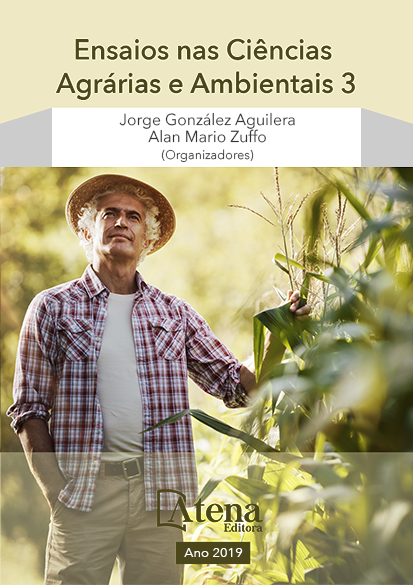
ACÚMULO DE MATÉRIA FRESCA E SECA DO CAPIM ELEFANTE EM RESPOSTA A DOSES DE NITROGÊNIO
Cultivado em todo o Brasil, o capim
elefante destaca-se por sua alta produção de
matéria seca (MS) por unidade de área, pelo seu
elevado valor nutritivo e por resistir a condições
climáticas desfavoráveis, como a seca e o frio.
Para a manutenção da elevada produção de
MS é indispensável que se realize o manejo
adequado dos macronutrientes, principalmente
os nitrogenados, tendo em vista a pobreza na
disponibilidade deste nutriente no solo, como
também a elevada demanda nutricional desta
forrageira. O objetivo desse trabalho foi avaliar
a produção do capim elefante cv. Cameroon,
adubado com diferentes doses de nitrogênio.
O experimento foi instalado na Escola Agrícola
de Jundiaí (EAJ), Universidade Federal do Rio
Grande do Norte (UFRN), Campus Macaíba/
RN. O delineamento experimental foi o de
blocos casualizados com cinco tratamentos (0,
200, 400, 600 e 800 kg ha-1 de nitrogênio) e
quatro repetições. Em todos os tratamentos
foram aplicados 150 kg ha-1 de P2O5, 150 kg
ha-1 de K2O, 30 kg ha-1 de S, 3 kg ha-1 de Zn. As
variáveis avaliadas foram produção de matéria
fresca e matéria seca. Houve incremento de
produção para as variáveis analisadas, com
maior produção quando se aplicou a dose de
600 kg ha-1 de N. A partir da dose de 800 kg ha-1
de N, foi observado um decréscimo no acúmulo
de massa fresca e massa seca
ACÚMULO DE MATÉRIA FRESCA E SECA DO CAPIM ELEFANTE EM RESPOSTA A DOSES DE NITROGÊNIO
-
DOI: 10.22533/at.ed.3911916011
-
Palavras-chave: Adubação nitrogenada, Produtividade, Pennisetum purpurem.
-
Keywords: Atena
-
Abstract:
Cultivated throughout Brazil,
elephant grass stands out for its high production
of dry matter (DM) per unit area, for its high
nutritional value, and for resisting unfavorable
climatic conditions such as drought and cold. In
order to maintain the high production of DM it
is essential that the appropriate management of
the macronutrients is carried out, especially the nitrogenous ones, considering the poverty in the availability of this nutrient in the soil,
as well as the high nutritional demand of this forage. The objective of this work was to
evaluate the elephant grass cv. Cameroon, fertilized with different doses of nitrogen. The
experiment was installed at the Jundiaí Agricultural School (EAJ), Federal University
of Rio Grande do Norte (UFRN), Campus Macaíba/RN. The experimental design was
a randomized block with five treatments (0, 200, 400, 600 and 800 kg ha-1 of nitrogen)
and four replications. In all treatments were applied 150 kg ha-1 of P2
O5
, 150 kg ha-1 of
K2
O, 30 kg ha-1 of S, and 3 kg ha-1 of Zn. The evaluated variables were fresh matter and
dry matter production. There was an increase in production for the variables analyzed,
with higher yield when the dose of 600 kg ha-1 of N. From the dose of 800 kg ha-1 of N,
a decrease in the accumulation of fresh mass and dry mass was observed.
-
Número de páginas: 15
- Marcio Gleybson da Silva Bezerra


